What's On Erin Riley's Desk?
The SDSU anthropology professor shares the stories behind the items in her workspace.
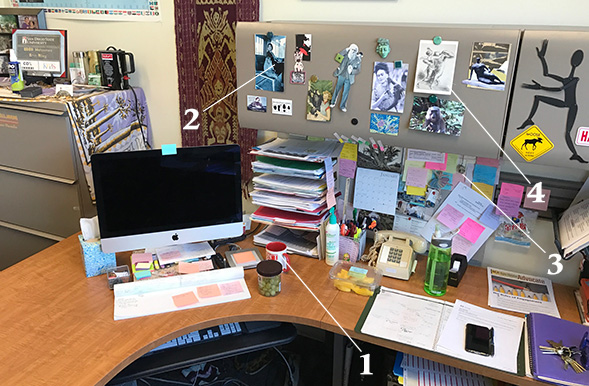
Erin Riley leads two different but interrelated lives, as she tells her colleagues and students.
From August to May, she wears her academic hat, serving as a professor of anthropology and graduate advisor at San Diego State University. Once the spring semester ends, she puts on her researcher hat, hiking through the forests of Indonesia to study primates.
Now in her 11th year at SDSU, Riley studies non-human primate behavior and how primates interface with people in various settings including tourist, zoo and rural.
In Indonesia, farmland often borders the forests primates call home. Primates have been known to leave the forest to feast on fruits and vegetables on agricultural land, which can lead to conflict with local farmers.
Situations like these have allowed Riley to not only study the primates, but also interact with the local communities, a very important part of her research.
“In some ways, it’s a pragmatic issue in the sense of when I first went to Indonesia to scope it out as a potential field site, I recognized that there are fewer and fewer places that you can find non-human primates that are free from any sort of human influence,” Riley said. “Instead of ignoring these types of settings, which a lot of primatologists have done in the past, I decided to make it my area of focus.”
But Riley does not limit her research to Indonesia. It also takes place down the hall from her office. The “Primate Wing,” which is part of SDSU’s Biological Anthropology Lab, allows Riley and her graduate students and undergraduate interns to conduct research and work on data. Last summer, Riley took three students from the “Primate Wing” to Indonesia to assist her with research. The trip was supported by SDSU’s President’s Leadership Fund.
Mementos from research trips can be found on Riley’s desk, which is filled with post-it notes and papers in stackable trays.
“I like stackable things,” Riley said. "They represents different things that I’m working on. I have many of them throughout my space. The content in the baskets might change, but the stackable trays do not.”
Yet, one thing stands out to Riley, perhaps the most used item on her desk: a notebook she bought from the SDSU Bookstore in 2006.
"Nobody writes things down anymore,” Riley said. “Most people keep their notes and appointments in their phones. I’m a little bit archaic in that a sense that I still have a paper calendar. The tactile sense of writing things down is how I remember things.”
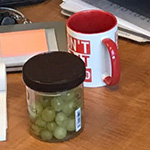
Here’s a look at some special items on her desk.
1. Mug: “My student made me this mug. When we are in Indonesia, for fun, we always go to karaoke. At the end of a long work day, we went out for karaoke and my student knows I like to sing a Rihanna song, and the mug has one of the lyrics from that song on it. So he got me this as a thank you for taking him to the field.”
2. Magazine Photo: “
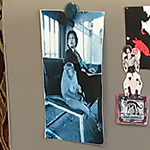
This one is from the Smithsonian Magazine. It’s from an article that was published back in 1999. This is an image taken, I believe, in Thailand. This picture basically encapsulates what I’m interested in. Here you have two female primates: one human, one non-human, sitting next to each other in an urban environment. If you look at their faces, they look as if there is nothing bizarre about this scenario. For pretty much every talk I give that has anything to do with my research, you can bet that this picture is in it.”
3. Keychain: “
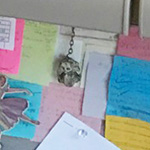
This is an Australopithecus, an early ancestor of ours that lived 2 million years ago. A colleague gave me this because when I first started studying anthropology, specifically biological anthropology, I was interested in ancient human remains and thought I might be interested in doing that. It’s called the “Black Skull” because when it was found fossilized, it was in tar so it was very dark. You can see the features like the saggittal crest and big, wide face.”
4. Postcard: “
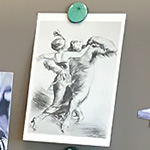
This is a postcard my sister sent me. It shows two primates, an ape and a human woman, dancing. My sister sent it because she knows that I study the human and non-human primate interface and I also love to dance. It was a combination of my passions. She sent it in 1998 from Washington, D.C. and I was in Georgia for graduate school. It’s titled, ’Orangotango’ by John French Sloan.”



